Prague is the least expensive of the places we visited in our recent wanderings around Europe, although some of the other formerly communist countries are also considered good value for money and are on our list for further ‘research’. There are things to do in Prague. One of the things that makes Prague truly interesting, is the way that a seemingly ordinary entrance off a footpath or square is actually the entrance to a little arcade, which opens out into another square with shops all round, or just a places for sitting and enjoying the peace.
Things to do in Prague
We made pretty good use of our time in Prague, but could happily have stayed much longer. Here are a few of the things we enjoyed.
1. Look for the Golam
The legend of Prague Golem is connected to the Old – New Synagogue. Golem was a monster made of clay by Rabi Jehud Löwa ben Bezalel in the 16 th century. He was created to defend Jews and help them in bad times. Golem looked like a human being and could be made alive by a piece of parchment with secret symbols given into his mouth. Golem later became aggressive and violent and had to be stopped by Rabi Löwa and made “dead” again. According to the legend, there are still remains of the Golem monster kept in the Old – New Synagogue garret and he can be “awakened” again when needed.
2. Find a Statue
Like most of us, you’re unlikely to find the Golam. However, you can look out for all the interesting and unusual statues dotted around in unexpected places. Look for David Cerný’s work, all over the city, including his parody of the famous Wenceslas statue in the Square, which hangs in Lucerna Palace gallery just off the southern side of the square. Look for his barcode babies and his ‘Pissing Men’. This is an interactive, moving sculpture which will write out a message for you if you send an SMS. The artist lives in Prague, so if you’re lucky, you may even be able to find him during your wanderings.
Look too, for the faceless statues around the city, in gardens, tucked in corners on the street or even attached to the city TV Tower. They’re made by various artists, but definitely make you stop and look.
3. Go to a concert
Take your pick of concert halls. Two of the easiest to find are the Smetana Hall (Municipal House) in Republic Square and the Estates Theatre, one of three Prague Opera Houses – The Prague State Opera, Estates Theatre and National Theatre. The Estates Theatre is close to the Old Town Square and is where Wolfgang Amadeus Mozart personally conducted the premiere of the opera Don Giovanni here in 1787. While you can go to performances of a selection of Mozart’s works throughout the year, Don Giovanni is staged from mid July to early September.
There seem to be musical concerts / ballet / exhibitions almost around each corner. Ticket prices vary, but prices for concerts in the art nouveau “Municipal House” started at 700 Crowns. This seemed quite reasonable for what we saw on the board for the next couple of days – light classical music from a variety of composers. Mozart seemed quite popular, included in most programmes.
4. Visit a local market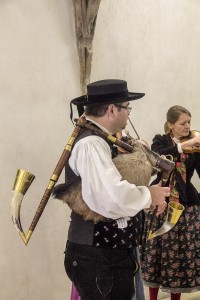
Our landlady discovered that this writer is a fan of local markets and sent us a message to suggest we visit the Saturday market at the New Town Hall in Karlovo nám in the ‘New Town’ (Nové Mesto).
We seemed to be the only non locals there and it was great to chat with the people selling their wares. We bought home made strudel and decorated biscuits, hand made glass jewellery from the artists and admired a microcosm of everyday local specialties.
Old fashioned toys on sale that would be hard to find elsewhere and beautiful hand-painted eggs caught our eyes. We discovered musical instruments we didn’t know existed and watched a blacksmith making metal gift items outside the front door, with his brazier and anvil.
5. Find a secret garden
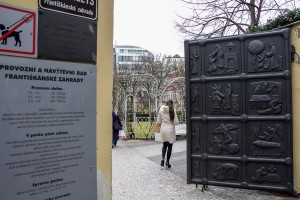 Just off Wenceslas Square, through a small arcade, you will find a small garden with benches (and a nice clean public toilet) which shares the side of one of the oldest churches in the city. We were intrigued to find that they were filming a period drama in a hall at the side. An encounter and lively chat with a young man keen to practice his English gave us his very interesting life story.
Just off Wenceslas Square, through a small arcade, you will find a small garden with benches (and a nice clean public toilet) which shares the side of one of the oldest churches in the city. We were intrigued to find that they were filming a period drama in a hall at the side. An encounter and lively chat with a young man keen to practice his English gave us his very interesting life story.
There’s a bronze statue of three ghostly figures displayed in the middle of the park, but we could find no information, either on the plinth or the internet regarding the artist or the work.
As you walk along the streets, keep your eye out for an open doorway which other people are using freely and you’ll often find it opens out into a small garden or square, often with small shops around it (See the Marionety shop below).
6. Buy a car (go shopping)
Well, not a real one, but you can buy a die cast model of one of the Škoda vehicles so closely allied with the Czech Republic. There’s a little shop in an arcade leading off Wenceslas Square. Find it about mid way down on the right as you face the National Museum.
Prague is possibly one of the best places in Europe to buy souvenirs and gifts. You can even buy a bottle of absinthe (much beloved by artists in the late 1800s/early 1900s). It’s not easy to find in many places as it was banned in some countries a hundred years ago.
Toys – This is the ‘must go’ place to buy the sort of toys kids used to play with. Marionettes, beautiful wooden toys & puzzles and die-cast metal vehicles. This writer also bought some metal ‘clickers’ that are great gifts for those who’d remember them. Great for grandchildren, who’ll find them fascinating for a while until the noise drives their parents up the wall..
Jewellery and glassware, chocolates – we found reasonably priced bohemian glassware for sale, especially if you look in shops away from the main tourist areas. Pick up some beautiful glass ornaments or buy glass jewellery straight from the artists at the weekend markets. Chocolate is also a good buy. Even if you go to a specialty store it’s reasonably priced, but if you’re happy with the commercial products, there’s plenty on offer in the supermarkets. There’s a shop selling old and new cameras and equipment near the Lucerna Palace Gallery and a very interesting music shop in Jungmannovo nám?stí (Jungmann Square). Find it just off the top end of Wenceslas square.
7. Find a monument or marker
May 9th markers
- The May 9th markers commemorate events on 9th May 1945.
- The Prague uprising (Pražské povstání) was an attempt by the Czech resistance to liberate the city of Prague from German occupation during World War II.
- Events began on May 5, 1945, in the last moments of the war in Europe.
- The uprising went on until May 8, 1945, ending in a German victory and ceasefire.
- One day after the Germans conquered Prague, they surrendered on the arrival of the Soviet Red Army.
Most of the markers are not obvious, rather they invite you to wonder what they are and ‘find out’. We found a few dotted around, along with markers for other events as well as those honouring people who has contributed to life in the city.
The Metronome
- The Metronome replaced a huge statue of Josef Stalin, erected after the Soviets took over the country and it became a communist state.
- The statue was built on a plinth overlooking the city in Letná Park at the end of the ?ech?v most (Svatopluk ?ech Bridge) over the Vltava River.
- The statue was destroyed (it was blown up) in 1962 and the plinth stood empty until the metronome was built in 1991.
- The 23metre high metronome actually works, most of the time, keeping steady time.
- It represents a variety of sentiments, depending upon who is telling you the story.
Jan Hus Statue in the Old Town Square
- Jan Hus’s movement predated Martin Luther’s Protestant Reformation
- He spoke out and criticised various practices of the Catholic Church.
- Hus was the dean of the Charles University in Prague and also preached in the Bethlehem Church.
- As a result of his speaking out, he was called to account by the church.
- When he refused to renounce his ideas he was burnt at the stake as a heretic on 6th July 1415.
- A Protestant uprising against the Catholic Church known as the Hussite Wars was eventually defeated.
- The statue, which dominates one side of the Old Town Square, was unveiled 500 years after his death on 6th July 1915.
8. Visit the historical buildings
 Prague’s lengthy history and pride in their buildings and bridges means there is a wealth of interesting architecture on display. You can find examples of architectural styles stretching from medieval times. There are also plenty of Gothic and Renaissance buildings in evidence as well as some of the much plainer soviet era buildings dotted around the city.
Prague’s lengthy history and pride in their buildings and bridges means there is a wealth of interesting architecture on display. You can find examples of architectural styles stretching from medieval times. There are also plenty of Gothic and Renaissance buildings in evidence as well as some of the much plainer soviet era buildings dotted around the city.
The bridges are also worth investigating. The Charles Bridge is not the only one worthy of attention, though it’s the best known, most decorated and has the longest history.
The two Town Halls are interesting, both in the old town [Staré Mesto] and the new town [Nové Mesto] and have interesting stories. The old town hall (pictured) has a sign explaining the meanng of ‘defenestration’. That means tossing someone out the window. Which is what happened here, more than once to unpopular city officials.
Prague Castle and St Vitus Cathedral are the most prominent buildings in the Menší Mesto pražské (Lesser Town of Prague) on the opposite side of the river.
9. Find a place of worship
 There are beautiful churches and synagogues across the city, reflecting the religious composition of the population. Many of these buildings have interesting stories to tell, including the Kostel Panny Marie Sn?žné (Church of Our Lady of the Snows). This medieval church near Jungmann Square. Originally intended to be the second largest in the city, it has never been completed.
There are beautiful churches and synagogues across the city, reflecting the religious composition of the population. Many of these buildings have interesting stories to tell, including the Kostel Panny Marie Sn?žné (Church of Our Lady of the Snows). This medieval church near Jungmann Square. Originally intended to be the second largest in the city, it has never been completed.
St Vitus Cathedral is a must see when you climb the hill to Prague Castle. Likewise the Svatý Jakub V?tší (Church of St. James the Greater), built in the 13th Century by the Franciscians. It’s home to the Madonna Pietatis and the tomb of Count Vratislav of Mitrovice.
The Old – New Synagogue in Prague is one of the most valuable Jewish historical buildings in Europe. It is the oldest European synagogue still serving its purpose and one of the oldest ones in the world. It was opened in 1270.
For more about what to do in Prague, visit our 10 must visit spots .
Image credit ©LL,RL

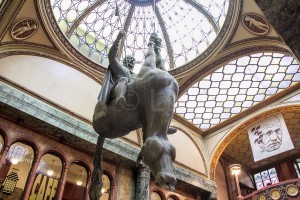
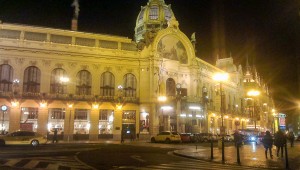
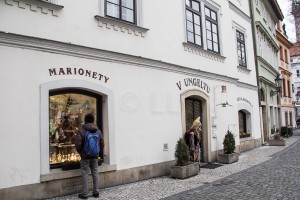
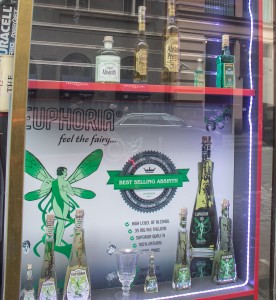
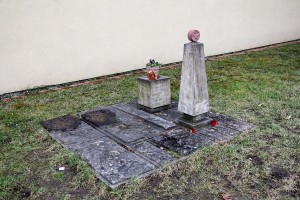
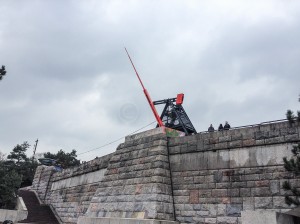

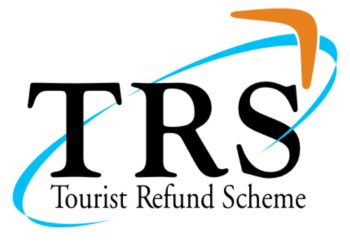





This Post Has 0 Comments